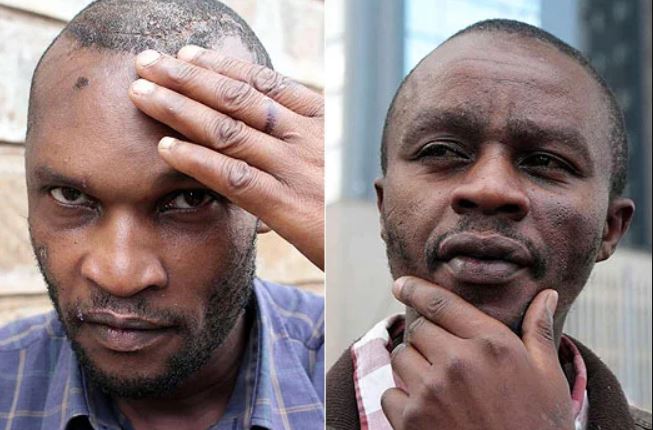
Medics at Kenyatta National Hospital have revealed details of the brain surgery mix-up that saw the wrong patient go under the knife.
Several employees, including nurses and doctors, appeared before the National Assembly Health committee on Wednesday.
A nurse identified as Mary Nyambura Wahome told the MPs there were 15 patients in the ward on that day, February 19. She said she went in and called out a patient, John Nderitu, who responded but “seemed very confused”.
Mary then took the patient with her without asking further questions.
“I went back to the station to prepare the file and the patient’s antibiotics,” a seemingly uneasy Mary said, adding she informed the patient that he was headed for surgery.
“He agreed. After that, I requested the patient to cooperate with us,” she said, adding the man was taken to the theater at 10 pm on that day and received by trauma theater nurse Catherine Gakii.
Mary, however, noted that at around 2 am the following day, a nurse asked her if she had taken a patient by the name Nderitu to the theater.
“I told him the patient was in the trauma theater. At 6:30 am, Miriam Bera, a nurse, asked me the same question so I felt something was off.”
Mary said she did not answer Bera’s question and thought she had taken the wrong patient to the theater.
“I told her ‘it seems as if I took the wrong patient to the theater’. I went to the theater and told them that I had taken the wrong patient there,” Mary said.
She told the MPs that she spoke to scrub nurse Gladys Wanjala and nurse Esther Muchiri who was in charge of the floor.
“Muchiri proceeded to the trauma theater and talked to Gakii(trauma theatre nurse). At that point, Gakii decided to hold a ‘small’ meeting with us, doctors and the people in charge of the surgery.”
The nurse said they discussed what had happened and the way forward.
“We then went back to the ward and left at midday after a discussion with nursing assistants,” she said, noting they had not engaged with management since noticing the mix-up.

They met the managers on March 5.
On her part, Catherine Gakii told the committee that on that day, her daytime team leader Hellen Kirui handed overnight duties before leaving.
“In the report, I found that one patient was to go to the theater and was to be prepared,” she said.
Gakii added the file had a special request on Nderitu.
“He was not received because the blood was not ready so he was wheeled back to ward Five A,” she said, adding she was asked to facilitate the provision of the blood.
“Meanwhile, I continued preparing other patients for surgery. At 9 pm, I called the ward and informed them to prepare Nderitu because the blood was ready.”
Gakii said Nderitu was taken to the theater at 10 pm. She went into the room and called him by name.
“He did not respond so I asked ‘are you Nderitu’. He nodded and murmured…” she recounted.
The theater nurse said ward assistant Mary Wahome then gave her a file to go through to make sure that was the right patient.
‘For one to identify the patient we use the patient list …” she noted.
Doctor Hudson Ng’ang’a, who operated on the patient, said he was surprised when they opened up the patient and found no blood clot.
“Mercy Moraa and I proceeded with the surgery but I was surprised that I was not able to locate the clot. We proceeded to look for the clot but could not find any … then a decision was made to finish the surgery and close the wound,” he said.
“I called on-call doctor Dave Manga. Manga reviewed the CT scan and the images and confirmed they were correct.”
Ngang’a said this was when they realised that there was a mix up.
“We realised the error after the surgery on the wrong patient was completed. Later, a ward Five A nurse said they were concerned that they took the wrong patient to the theater,” he said.
The doctor said nurse Mary looked very worried and expressed this.
“I then informed Dr Michael Magoha and other doctors. The team led by Dr Mwangome reviewed the correct patient Samuel Kimani and Nderitu.”
Ng’anga said a decision was made to move Nderitu from surgery management to non-operative management based on his condition at the time.
“In view of the above, it is our opinion that the patient was confused and we exercised due diligence. We reviewed and found that he was disoriented and confused,” he said.
“I regret that this happened to Samuel Wachira and I hope it never happens again,” said Dr. Ng’ang’a.
“I recommend that the patient should labeled by an armband and a picture taken upon being admitted to avoid such incidents.”
-Additional Reporting by The Star






